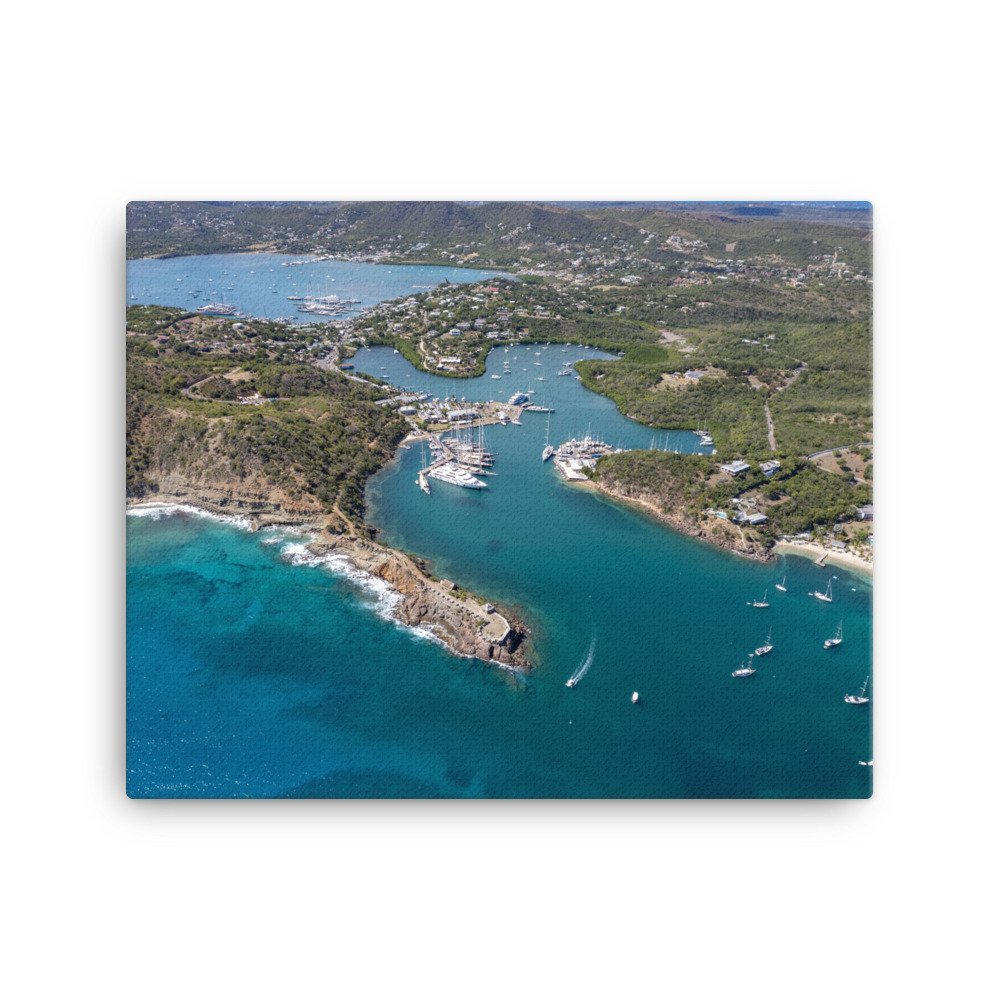 Image 1 of 6
Image 1 of 6

 Image 2 of 6
Image 2 of 6

 Image 3 of 6
Image 3 of 6

 Image 4 of 6
Image 4 of 6

 Image 5 of 6
Image 5 of 6

 Image 6 of 6
Image 6 of 6







Canvas - English Harbour, Antigua
from $40.00
English Harbour, located in the extreme south of the island of Antigua roughly 17 degrees north of the equator, is a deep water, well protected harbor that played an important part of the islands history. The island was visited in 1493 by Christopher Columbus and colonized by English settlers in 1632 until November 1, 1981 when it became an indepent state within the Commonwealth of Nations. It got its name "English Harbour" because it was used as the base of operations for the British Royal Navy in the 18th century. The Harbour also includes the Antigua Naval Dockyard which has been protected as a National Park since 1984 under the National Parks Act. Its reputation as a "hurricane hole" attracts a myriad of different boaters from monohull cruisers to billion dollar superyachts. Today, the harbor hosts a number of annual events such as Antigua Sailing Week held at the end of April/beginnging of May, Antigua Classic Yacht Regatta held in late March/early Arpil, The Supteryacht Challenge held in March and Antigua Charter Yacht Show held in early December. Galleon Beach is located next to English Harbour and is a great place to visit the beach or snorkel and the Pillars of Hercules stand watch at the mouth of the harbour facing south towards Guadeloupe.
Size:
Quantity:
Add To Cart
English Harbour, located in the extreme south of the island of Antigua roughly 17 degrees north of the equator, is a deep water, well protected harbor that played an important part of the islands history. The island was visited in 1493 by Christopher Columbus and colonized by English settlers in 1632 until November 1, 1981 when it became an indepent state within the Commonwealth of Nations. It got its name "English Harbour" because it was used as the base of operations for the British Royal Navy in the 18th century. The Harbour also includes the Antigua Naval Dockyard which has been protected as a National Park since 1984 under the National Parks Act. Its reputation as a "hurricane hole" attracts a myriad of different boaters from monohull cruisers to billion dollar superyachts. Today, the harbor hosts a number of annual events such as Antigua Sailing Week held at the end of April/beginnging of May, Antigua Classic Yacht Regatta held in late March/early Arpil, The Supteryacht Challenge held in March and Antigua Charter Yacht Show held in early December. Galleon Beach is located next to English Harbour and is a great place to visit the beach or snorkel and the Pillars of Hercules stand watch at the mouth of the harbour facing south towards Guadeloupe.
English Harbour, located in the extreme south of the island of Antigua roughly 17 degrees north of the equator, is a deep water, well protected harbor that played an important part of the islands history. The island was visited in 1493 by Christopher Columbus and colonized by English settlers in 1632 until November 1, 1981 when it became an indepent state within the Commonwealth of Nations. It got its name "English Harbour" because it was used as the base of operations for the British Royal Navy in the 18th century. The Harbour also includes the Antigua Naval Dockyard which has been protected as a National Park since 1984 under the National Parks Act. Its reputation as a "hurricane hole" attracts a myriad of different boaters from monohull cruisers to billion dollar superyachts. Today, the harbor hosts a number of annual events such as Antigua Sailing Week held at the end of April/beginnging of May, Antigua Classic Yacht Regatta held in late March/early Arpil, The Supteryacht Challenge held in March and Antigua Charter Yacht Show held in early December. Galleon Beach is located next to English Harbour and is a great place to visit the beach or snorkel and the Pillars of Hercules stand watch at the mouth of the harbour facing south towards Guadeloupe.
